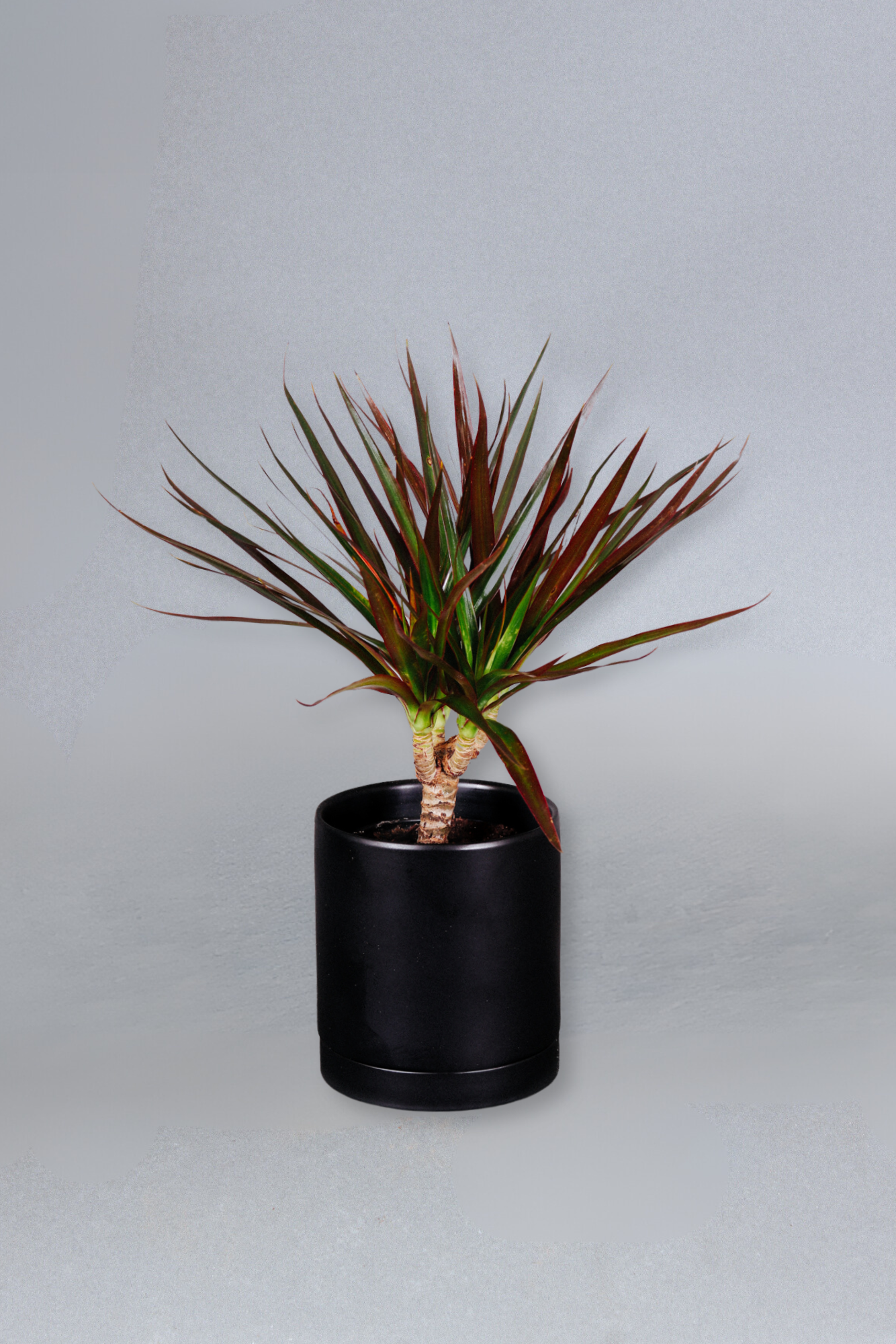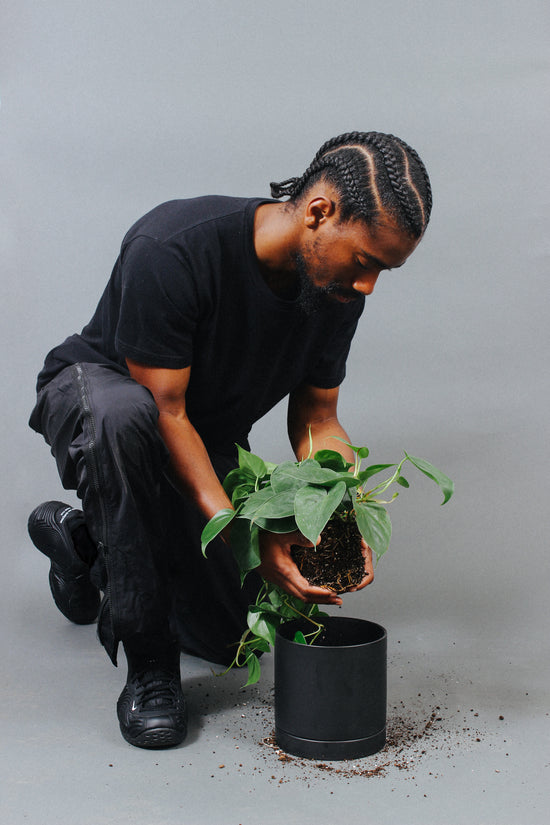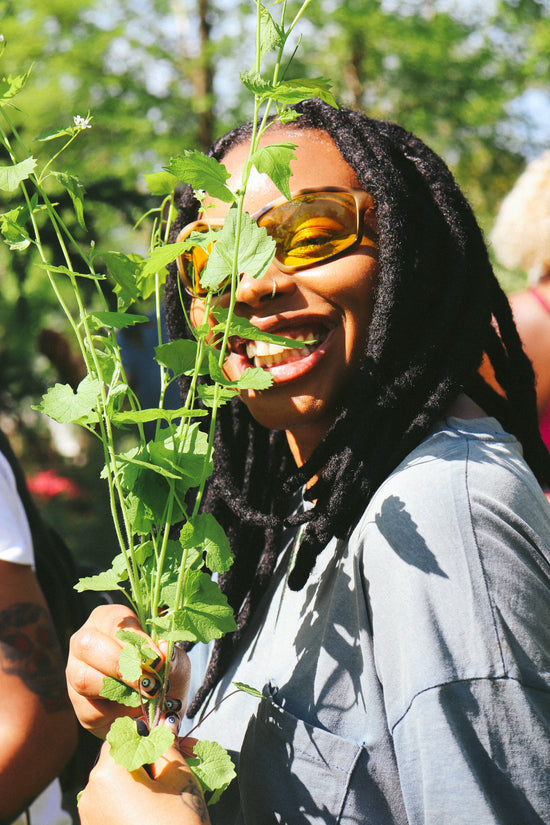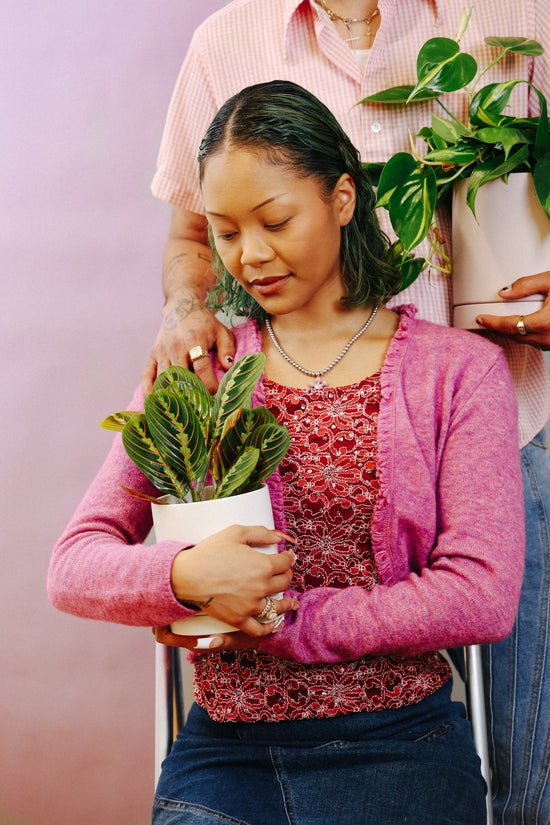If you're feeling energized by spring's sunshine, you might be interested in growing some of nature’s goodness right at home. There are plenty of edible plants that can be grown indoors. If you haven't found your green thumb with houseplants yet, you may find that growing food feels more natural and rewarding to you. No matter your expertise, here are seven beginner-friendly indoor plants we recommend growing from seed and food scraps from your kitchen.
FROM SEED |
FROM FOOD SCRAPS |
|
Basil Parsley Mint
|
Lettuce Green Onion Potato Carrot |
SUPPLIES
If you've repotted a plant before, you may already have some of these tools ready. If not, feel free to get creative by using what you have on hand to DIY anything on the list!
Potting Soil
Find potting soil made for potted containers and vegetables. When growing plants from seed, look for a seed-starting mixture.
Glass Jars
Some plants can be grown in glass jars using just water. Others can start growing their roots this way before moving to soil.
Seeds
Seeds for many different herbs, fruits, and vegetables can be found online or at your local store. Organic seeds will be less likely to have pesticide use in the plant's lineage. We recommend basil, mint, parsley, microgreens, or any other favorites you have!
Food Scraps
You want to keep the scrap end that you usually chop off and toss - the end that shows evidence of once being connected to a stem growing from the ground. Lettuce, green onion (scallions), carrots, and potatoes are some of the easiest to grow from scraps!
Pots
The pot you use for growing will depend on the stage and size of the plant, as well as the preference of the planter (you). Seed-starting pots or kits are perfect for seeds. You can also create your own with egg cartons or the bottoms of plastic water bottles (add holes for drainage).
For plants that are growing, plastic nursery planters or fabric grow bags are great. They are lightweight and easy to move if needed. They can easily be cleaned and repurposed for future use.
For established plants, sturdy clay planters are always a top choice. Clay is porous, allowing the soil to dry efficiently, and is hardy enough to support the plant’s growth.
HOW TO DO IT
Plants are best grown in their natural season, especially outdoors or when starting from seed. Even so, you can have plenty of success growing some of these plants indoors at any point throughout the year. Check out our seven picks below to learn the growing tips + expectations of each!
GROWING LETTUCE, SCALLIONS, CARROTS, AND POTATOES FROM SCRAPS
These veggies are common household staples. Next time you’re chopping them fresh from the grocery store, save a quality scrap to start your indoor garden.
LETTUCE
GROWING MEDIUM: Can be grown in water or soil.
BENEFITS: Packed with vitamins C + K and minerals like calcium, magnesium, and potassium.
GROWING SEASON: Indoors, anytime. Outdoors, in early spring or through winter in warm climates.
INSTRUCTIONS BY WATER:
- Make a clean cut at the bottom of the lettuce head. A 2-3 inch scrap is great. Make sure the scrap is clean.
- Place it in a clean jar of water under bright light.
- Replace with clean water every few days.
- Grows to an edible size within 2-3 weeks. Snip the lettuce you want to eat with clean scissors + enjoy! To encourage it to continue growing, transfer it to soil (below).
Note: Lettuce can be grown hydroponically with proper setup and regular hydroponic fertilizer treatments.
INSTRUCTIONS BY SOIL:
- Follow steps 1-4 above to grow roots from your lettuce head scrap.
- Gather a pot with a drainage hole and quality, loose soil to plant the cutting.
- Plant each cutting into the soil.
- Place it near the sunniest window you have. Lettuce prefers full sunlight to grow.
- Keep soil regularly moist and fertilize every two weeks.
GREEN ONION SCALLIONS
GROWING MEDIUM: Can be grown in water or soil.
BENEFITS: Contains Vitamin C, Magnesium, and Iron + Reduces Inflammation.
GROWING SEASON: Indoors, anytime. Outdoors, in April-May.
INSTRUCTIONS BY WATER:
- Make a clean cut at the end of your scallion stalk(s), leaving about 3+ inches from the root end.
- Put the stem cuttings in a clean jar of water that covers the white bottom (about an inch). Place under bright and indirect light.
- Maintain clean water and watch the scallions grow tall in just a few days.
- Snip the tops of the green onion for your meals as needed. The plant will continue to grow.
- For best results, place a large ziploc bag loosely over the top of the scallions and move the glass into the fridge. Continue to refresh the water every 2-3 days.
- (Optional) Transplant to soil (below). Green onions will grow better long-term when transplanted to soil.
INSTRUCTIONS BY SOIL:
- Follow steps 1-5 above to grow roots from your scallion scrap.
- Gather a pot with a drainage hole and quality, sandy soil to plant the cutting in.
- Plant the cuttings upright into the soil.
- Place it near the sunniest window you have. Scallions prefer full sun.
- Keep soil regularly moist and fertilize every two weeks.
CARROT
GROWING MEDIUM: Roots in water + grows in soil
BENEFITS: Contain antioxidants, Vitamin A, and is great for eye health.
GROWING SEASON: Indoors, anytime. Outdoors, during spring and fall.
INSTRUCTIONS:
- Make a clean cut at the end of your carrot, leaving about 1-2 inches of carrot.
- Put the stem cuttings in a clean glass with about 0.5-1 inches of water.
- Replace with clean water every few days and watch roots begin to grow.
- Once roots are 1+ inches long, transplant to soil.
- Use loose, sandy soil for your carrots.
- Keep soil slightly moist and fertilize biweekly for best results.
POTATO
GROWING MEDIUM: Grows underground in soil
BENEFITS: Vitamin C, Magnesium, Zinc, Iron, and Calcium
GROWING SEASON: Indoors, anytime. Outdoors, in early spring.
INSTRUCTIONS:
- Choose a healthy potato free of disease and without sprouts.
- Cut the potato into small sections. Each section should have a few "eyes" (the indents where sprouts usually grow).
- Allow the cut sections to dry and callous for 48-72 hours. This prevents the potato chunk from rotting once planted.
- Plant the potato chunks into the soil, allowing a few inches of space between each. Plant them with the skin side/eyes facing up.
- Cover them with about 2 inches of additional soil. Water generously.
- Place in bright light and direct sunlight if possible. Potatoes prefer 6+ hours of sunlight each day.
- Keep water evenly moist and cover with soil as vines begin to grow above ground. Fertilize biweekly.
- Potatoes should be ready to harvest within 3-4 months! Remember, these grow underground, so you won't have insight into their development until you harvest them.
GROWING BASIL, PARSLEY, MINT, AND MICROGREENS FROM SEED
Herbs are the perfect complement to any dish while packing amazing qualities into such compact growth. Herbs are some of the easiest edible plants to maintain indoors. Start your herb garden with our top picks.
When planting from seed, use soil designed for seeds and something you can use for a seed-starting pot. Find seed pots in the garden section at your local store or repurpose egg cartons, plastic water bottles, etc. Just make sure that your pot of choice has drainage at the bottom.
INSTRUCTIONS TO GROW HERBS FROM SEEDS INDOORS
- Plant your seeds into the soil, following the recommended depth on the package instructions.
- Water generously and place in bright light. 6+ hours of sunlight daily is recommended.
- Keep soil evenly moist. Most seeds sprout best when given humid conditions in the beginning growing stages. Some seed-starting pots will come with a plastic top or you can get crafty with your own. A top will contain the humidity produced from moist soil and a warm container. Ensure there is still airflow.
- Choose the healthiest and strongest sprouts to keep once your seedlings have sprouted. Trim away the others.
- After a few weeks, your seedlings will be ready to move into a pot with fresh soil. At this point, your seedling should look strong and healthy with a set of its "true leaves". True leaves are usually the second set of leaves that develop as the sprout grows.
GROWING HERBS IN CONTAINERS
Herbs prefer to grow in soil that is kept evenly moist with 6-8 hours of bright light each day. Indoors, you may need to water a couple of times each week. Outdoors, you're likely to water more often, given the bright sun and fresh air.
Make sure to fertilize biweekly for healthy growth. Herbs should be pruned regularly to maximize development. Add them to your weekly meals, or freeze them for use later!
PRO TIPS
Successful gardening requires a few essential things - like robust nutrients and careful placement. In no time, you'll be enjoying fresher meals grown from your green thumb. Don't skip out on our pro tips for growing edible plants at home!
- Fertilizing is key. Use a commercial fertilizer or DIY your own for biweekly treatments to produce healthy growth.
- Worm Castings are fantastic for soil in your houseplants or garden. They're full of organic goodness that boost health + growth.
- Grow Lights can be used indoors to supplement for lack of brightness or hours of daylight.
- Outdoor growth should be transitioned slowly, to avoid shocking the plant from a drastic change in environment. Move it outside for a few hours each day, over the course of 5-7 days.
-------
Did you know that the oil of a basil leaf may mimic the effects of pain relief you'd find in an ibuprofen? Share your indoor garden pictures and stories with us at @groun.ded!








